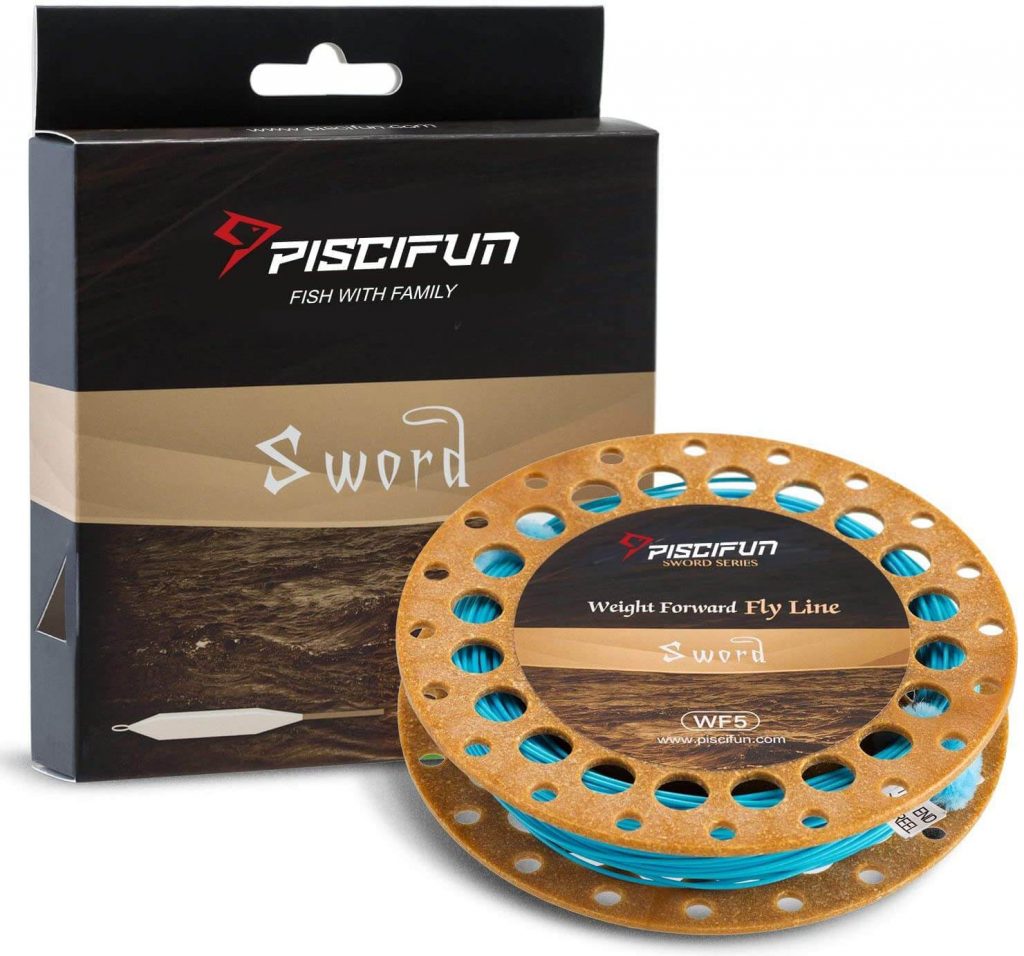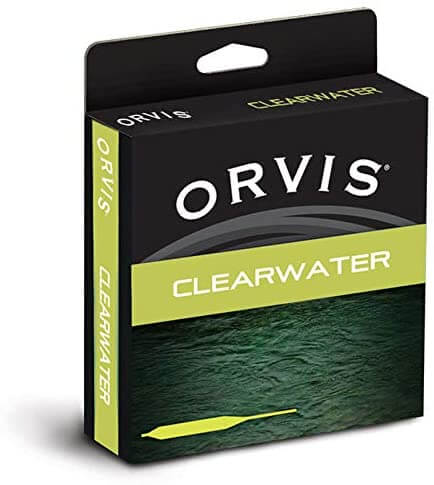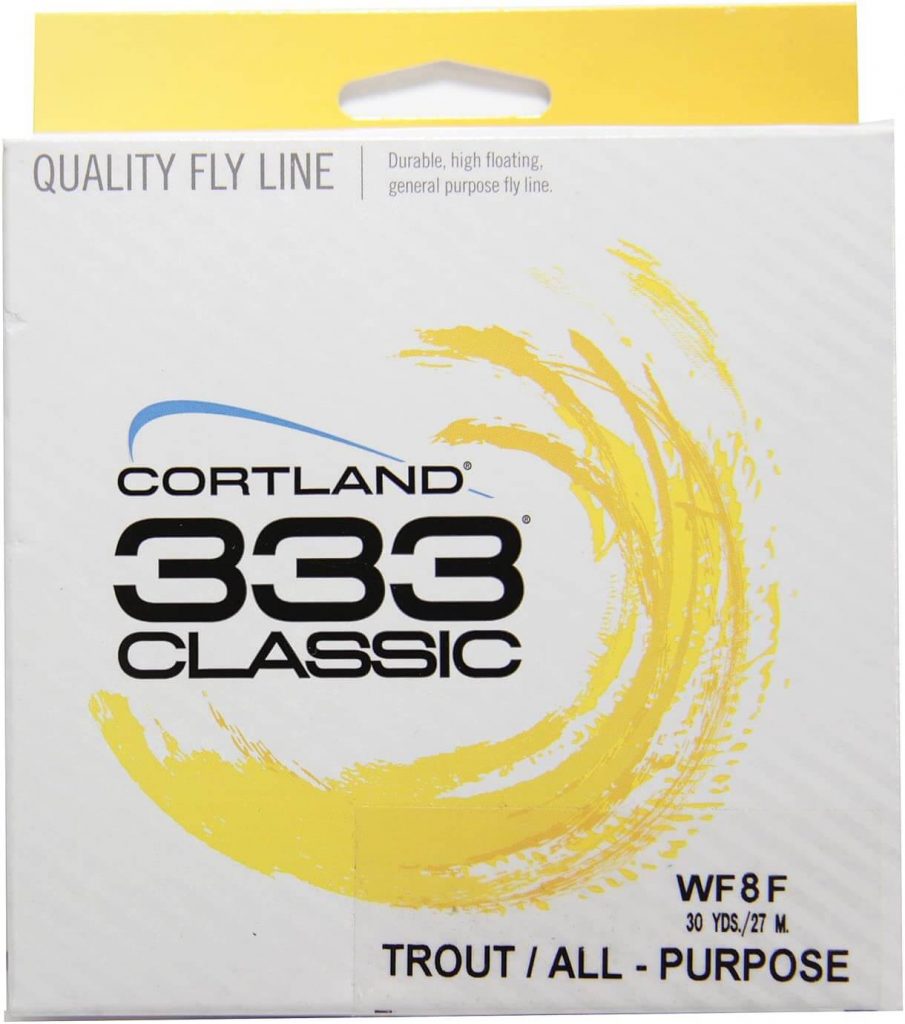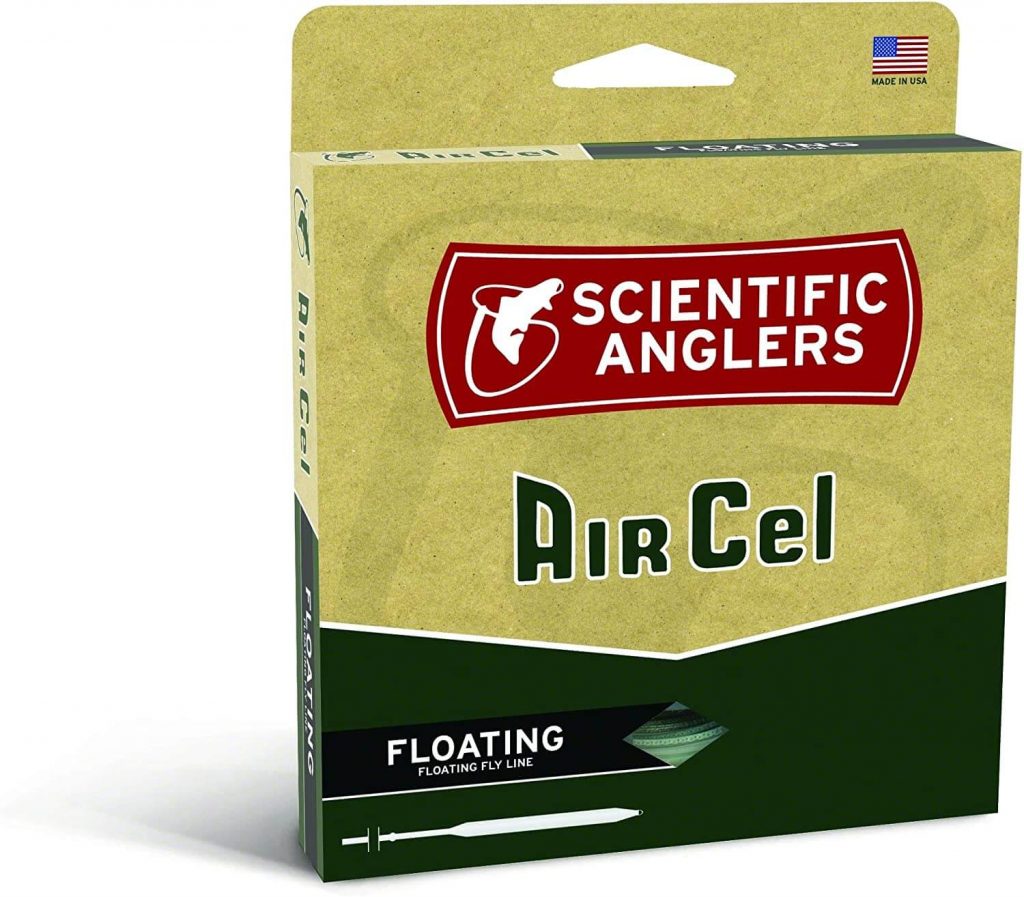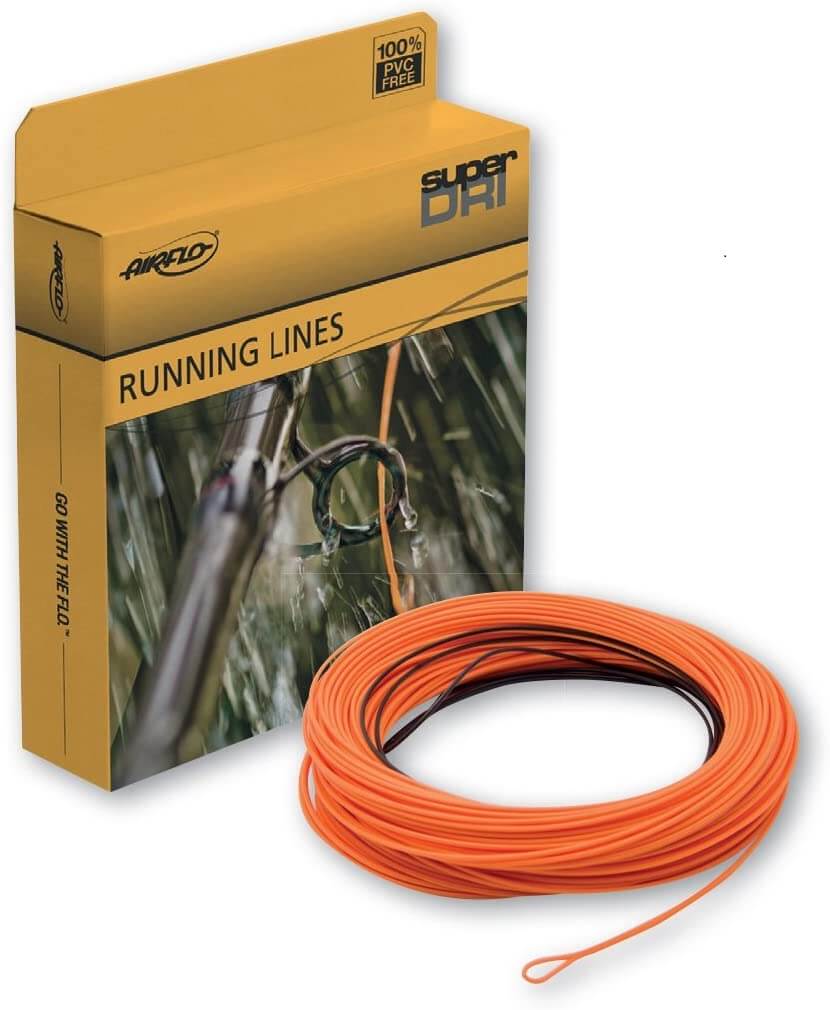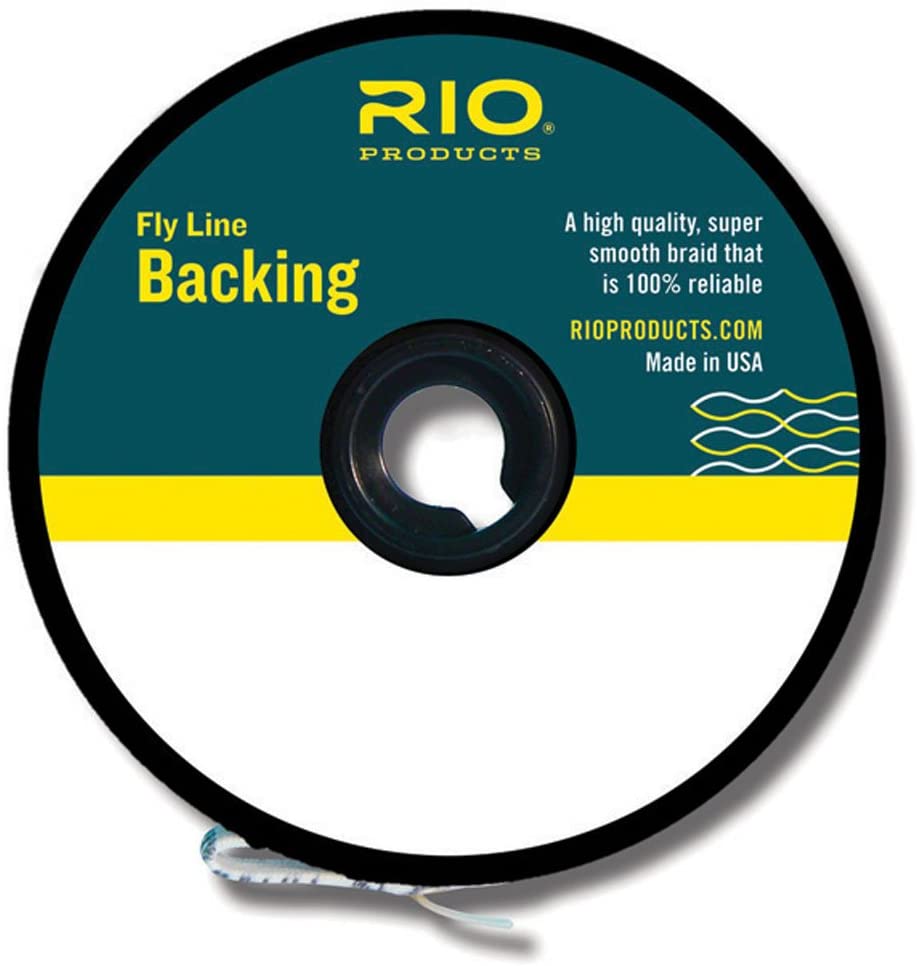Using the best fly lines is mandatory to ideally cast the lines and make the most out of your fly fishing experience. For newcomers, making a pragmatic fishing line choice could be difficult given the technicalities involved. Therefore, we have decided to put together a simple instruction manual that would help you select the product that fits your needs the best.
To make things even easier, we have also compiled a shortlist of 7 products that fulfill the selection criteria most fly fishers look for. We will also break down how lines improve your fishing endeavors, compare them with braided lines, and answer some of the most asked questions.
So, without further ado, let’s get started with the reviews!
Read More:
The 6 Best Fly Lines We Will Cover Today
1. Piscifun Sword Fly Fishing Line
2. Orvis Clearwater WF Fly Fishing Line
3. Cortland 333 Full Sinking Type 3
4. Scientific Anglers Air Cel Floating Lines
5. Airflo Fishing Super-Dri Running Lines
6. Rio Fly Fishing Backing Dacron 20Lb
Fly lines Reviews!
1. Piscifun Sword Fly Fishing Line
The final entry in our list is Piscifun Sword Fly Fishing Line. It has a high line length range that spans from 90 feet to 100 feet. To complement that, it features a forward-weight design that lets the line travel across larger areas. The craftsmanship of this line is exemplary as it ensures optimum turnover and superior tensile strength.
Features
- Braided Core: The line has a braided core. This eliminates memory to a substantial degree and ensures that the line doesn’t twist while casting. The braided core also helps the line cope with all sorts of weather conditions.
- Integrated Slickness Additive: When you are aiming for longer casts, you can’t afford to let friction get in your way. The integrated slickness additive provides sufficient lubrication so the casts remain smooth.
- Improved Welded Loop: A well-engineered loop can escalate your fishing experience to a whole new level. This upgraded welded loop is responsible for the untroubled line-to-tip energy transmission, which results in a perfect turnover.
Pros
- Heavy-duty line.
- Multiple lengths and weight options.
- Well built.
- Floats well.
Cons
- Doesn’t hold up well in windy situations
2. Orvis Clearwater WF Fly Fishing Line
If you are fresh into the fly fishing scene, then Orvis Line could be your go-to piece. Orvis is a trusted name in the world of fly fishing, and the quality of this line reflects that. What makes this such a perfect fit for beginners is that it has a sizeable margin of error. The design allows a smoother transition of force, which makes casting easier than ever.
Features
- Cast Friendly Design: The designers have exploited a half-heavy design in this line for better flexibility. The smaller head shape accounts for the effortless energy transition, which, in turn, produces more leader turnover.
- Integrated Slickness: The line boasts Orvis’s proprietary ‘’Integrated Slickness’’ technology. This refers to the use of additives to minimize guide friction so that you feel minimal obstruction while casting.
- Braided Multifilament Core: These lines have a braided multifilament core, which provides more suppleness. Therefore, these lines are more capable of withstanding weather adversities and make them useful for multiple angling situations.
Pros
- High margin of error.
- Easy to cast.
- Compensates for windy conditions.
- Easy to notice the yellow color.
Cons
- Not durable.
3. Cortland 333 Full Sinking Type 3
Next up in our best fly lines list is Cortland 333 Full Sinking Type 3. These lines let you throw some nice loops with utmost precision. It would function well with any current-day graphite rods. The heavy header submerges into the water nicely to entice bottom feeders like carp and trout.
Feature
- PVC: PVC made the line for increased durability. It works very well with modern graphite rods. In fact, this is one of the first fly lines ever produced with PVC material in the entire industry.
- Sinking Fly: If you want to bag some trout, you have to use a sinking fly. Trout rarely feed on the water’s surface, so you need to deploy an underwater tactic. This fly submerges into the water and lures trout, carp, and other bottom-feeding fish.
- Weight Forward Line: It incorporates a weight-forward design that lets you gather enough momentum to make longer casts. It does not just give you faster roll casting, it also aids you in mending and gives you better control.
Pros
- Appropriate for trout fishing.
- Easy to control.
- Compatible with all modern granite rods.
Cons
- Doesn’t work well in cold water.
4. Scientific Anglers Air Cel Floating Lines
The name Scientific Anglers might sound a bit gimmicky. But, the truth is, the company always prioritizes the use of science on their products. Hence, all Scientific Anglers fly fishing gears have some distinctive technological traits. Scientific Anglers Air Cel Floating Lines are the best fly lines in the low price range with a handful of attractive offerings.
Features
- Buoyancy Coated Line: This line comes coated in high buoyancy materials so that the line stays adrift in all situations. This makes it a great choice for fishing bass and salmon in a variety of water current rates.
- Braided Multifilament Core: The braided multifilament core gives the line a massive boost in terms of flexibility. It allows you to try some astonishingly long casts with minimal memory issues.
- Strike Indicator: Strike indicators will respond to the slightest touches in your fly. Doing so, they point you towards a high-traffic area you might have previously missed. When you are sure there are fish in a certain spot, you can double up your efforts there.
Pros
- Cost-effective.
- Accurate strike indicator.
- Highly floatable.
- Flexible line.
Cons
- Gets dirty soon.
5. Airflo Fishing Super-Dri running Lines
Airflo has produced some of the best lines over the years, but they had a specific vulnerability. Past Airflo had been accused of not being “floatable enough.” So, these fly lines come equipped with Super-DRI technology that helps them remedy this issue. The Ridge Polyfuse barrier gives it also a level of slickness that cuts down friction to a minimum.
Features
- Super-DRI Technology: Super-DRI technology provides an unprecedented level of buoyancy in this Airflo line. It is also dirt repellant, which saves you the trouble of cleaning it regularly.
- Ridge Polyfuse Coating: It is the Ridge Polyfuse outer coating that makes this line incredibly sleek. It promotes straightforward bending and casting. On top of that, it enhances the line’s durability.
- Easy To Gauge Loading System: These lines have a noticeable black band at the end. The inclusion of these bands has made it remarkably easy to keep track of the loading process.
Pros
- High floatability.
- Dirt repellant.
- High durability.
Cons
- Not ideal for short casts.
6. Rio Fly Fishing Backing Dacron 20Lb
The Rio Dacron line goes very easy on the pocket, but alike any other Rio product, it offers top-notch performance. The 100-yard line gives you enough mileage to wear out the most energetic catches. It is quite thin, which makes it suitable for tying some not-so-simple knots. It is a well-made line that will add substantial nuance to your fishing attempts.
Features
- Traditional Braided Line: This is a classic braided line that gives you ample opportunity to maneuver some tricky casts. It is not as supple as the other items we discussed, but it makes up for it with its extraordinary strength.
- Knot-Friendly Thickness: If you want to try your hands at making some complex knots, you can’t find a better line than this. It has the ideal thickness level for forming knots without compromising its durability.
- 100-Yard Line: The 100-yard line length would particularly come in handy if you manage to hook a fish that would refuse to give up without a fight. With this much line length, you can remain confident that the fish will get tired soon enough.
Pros
- Easy to tie knots.
- Very strong.
- Low price.
Cons
- Braided lines are not favored by all anglers.
The benefit of Fly Lines
Fly fishing lines are easier to operate in a natural water setting, like a river or a stream. These lines are lightweight, which makes them easier to hold onto in current. If you fish with traditional spin fishing lines, which require a heavier rod than fly fishing rods, you will face a lot of trouble controlling the rod against the current.
Another advantage of fly fishing lines is their discreet nature. When you throw a spinning line, it makes a huge splash, which scares the fish away. Fly fishing lines don’t make such a fuss and land gently on the water’s surface, leaving no reason for the fish to become suspicious. Even the sinking flies have a more subdued landing than spinning lines.
The most significant benefit of fly fishing lines is that you don’t need to use any lures. You would be saving a considerable amount of money as you won’t need to buy any bait. Flies are not a regular investment, and they cost far less than food lures. You can buy good quality flies for a dollar, but you have to spend more than twice that amount to get some decent lure.
Fly Fishing Line VS Braided Fishing Line
Fly lines deliver the fly to the target spot. The best fly fishing lines ignore wind resistance and allow the angler to cast precise cast at long and short ranges. Flexibility is an important feature of these lines. Without a favorable amount of liability, it would be quite difficult to fish with fly lines.
Braided lines miss out on this crucial characteristic. Hence, they don’t make good fly fishing lines. Otherwise, they are strong and show good resilience to wind and water. They are also strikingly visible over the body. But, the low stretch nature of braided lines rules them out as a first-choice line material contender.
However, braided lines are widely used as fly line backing material. They take up the empty space inside the reel and provide faster reeling action. When you hook a large fish, it will try to run and if you don’t have any backup to your original fishing line length, the sudden pull might break the rod.
That would be an expensive mistake since fishing rods don’t come cheap. If you use braided lines as backing, you can let the fish run and exhaust itself. Once the fish becomes fatigued, you can slowly reel it in. So, braided lines make excellent backing material even though they don’t offer the same utility as fly fishing lines.
How To Buy The Best Fly Lines?
Which one is the best fly fishing line? There is no definite answer to this question. Depending on individual goals and preferences, the answer would vary.
You must make sure the fly fishing line you are buying addresses all areas of your need. Ask yourself the questions we have listed below. If you know the answer to all of them, then you would have no trouble in narrowing down the best fly fishing lines for you:
What Kind Of Taper Design Do You Want?
Tapered leaders have superior aerodynamic properties. It is possible to fly fish without tapered lines, but you would only invite a whole lot of trouble doing so. Tapers guarantee smooth turnover and accommodate subtle landings on water. If you take these aspects away, fly fishing would be a nightmare.
You have two options when choosing taper designs. You can either choose a weight-forward taper line or, you can side with a double taper design. Weight-forward tapered lines come with WF markings, and they have a thicker front line. The front end of a weight-forward line bears more weight and cuts through the wind to reach the desired spot.
Weight-forward lines are beginner-friendly and work great in windy conditions. Double tapered lines, on the other hand, have increased thickness on both ends. While there’s a slight learning curve to it, you can achieve some excellent results using DT lines. Also, you can use it as a weight forward line if one of the tapered ends wears off.
What Is The Right Line Weight For You?
Fly fishing lines are graded in grains when we differentiate between their weights. A fly line could be as light a grain. On the heavier end of the spectrum, it could measure up to 14 grains. Fly line weight selection relies more on the type of fish you want to catch, rather than your comfort level.
If you are out in the water hoping for panfish and small-sized trout, you won’t need to go beyond 1-3 grains. Understandably, the number would go up as you set your sights on larger fish. 4-6 grains would give you access to general-purpose trout and bass fishing. At weight 7, you can expect to catch any size of bass.
From 8 and upwards, you can target all common freshwater and saltwater games. Always remember that you would need to support heavier flyweights with heavier fishing rods. Otherwise, you will throw your balance away. Without proper rod-fly weight coordination, you can’t expect to catch the fish you want.
How Frequently Would You Use The Line?
If you fish more often, then you would need more durable lines. It is as simple as that! You need to pay attention to the coating material to assess the durability of a line. PVC coatings last longer than other coating materials. They also provide great suppleness and strength. However, there are cheaper alternatives that can give you similar performance with less protection.
Durability loses its significance if you go fishing once in a blue moon. You would need to pay more for extra durability, and it will do you no good if you don’t use the lines regularly. If you are an occasional angler, there is no point in spending more for a durable line. Focus more on flexibility, taper design, and weight.
Frequently Asked Questions
1. What Is The Best Floating Fly Line?
Any fly line that meets a certain set of criteria can be considered as the best floating line. First, it has to be made of a high-buoyancy material. Second, it has to have a generous amount of forgiveness. Third, it should be able to cut into wind and water with ease. And finally, it has to be flexible.
2. What Color Fly Line Is Best?
You should select a color that contrasts the water body. If you are fishing in a lake for example, with a green reflection on it, using a green-colored line will not be a smart idea. Go for vibrant colors like black, yellow, and orange to make sure the line remains visible all the time upon casting.
3. What Is The Best Fly Line For Beginners?
We would suggest new fly fishers start with weight-forward fly fishing lines. Any novice angler would find these lines very easy to cast. The weight distribution in these lines makes it convenient for the angler to throw it far away. These lines also fare well in short-range casting situations.
4. What Does WF Mean On Fly Line?
WF stands for weight forward and it represents fly fishing lines with weight-forward taper. These fly lines have heavy front ends compared to the rest of their body. Usually, the first 10 yards of a WF line is the thickest part of the line. This specific detail produces superior penetrating force through air. The angler takes advantage of this and makes comfortable castings.
5. How Do I Choose A Fly Line?
At first, you have to decide which tapering design suits you best. After choosing any one of WT or DT, you will have to consider what kind of fishing you want to do. Based on that, you have to pick the flyweight.
And then, you have to look for a line that shows adequate suppleness and has the ability to tackle weather adversities. The fly fishing line that ticks all the above-mentioned boxes is the one you should choose.
FINAL THOUGHTS
You can’t ignore the role the fishing line plays in fly fishing. Therefore, stick to the best fly lines and enjoy fly fishing to its fullest.
Read More:
